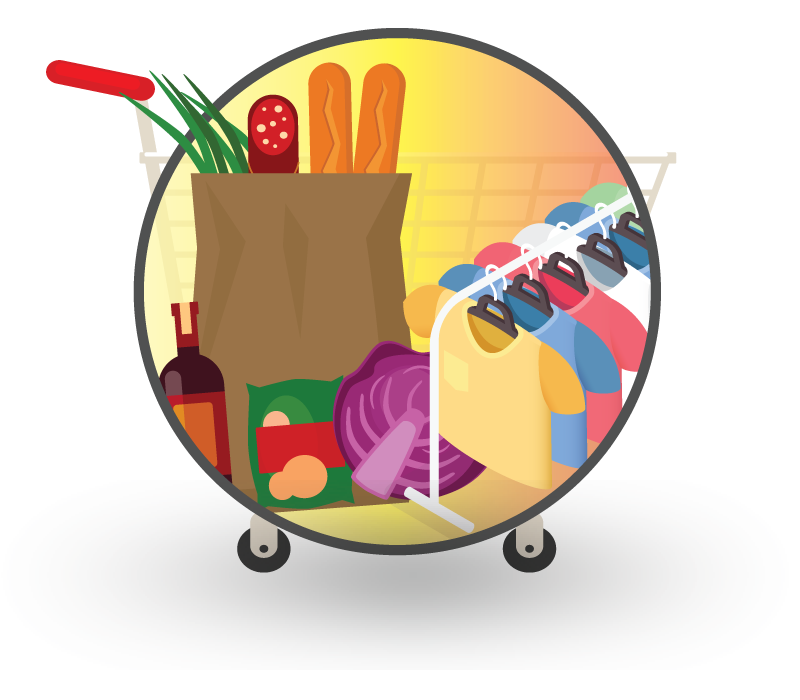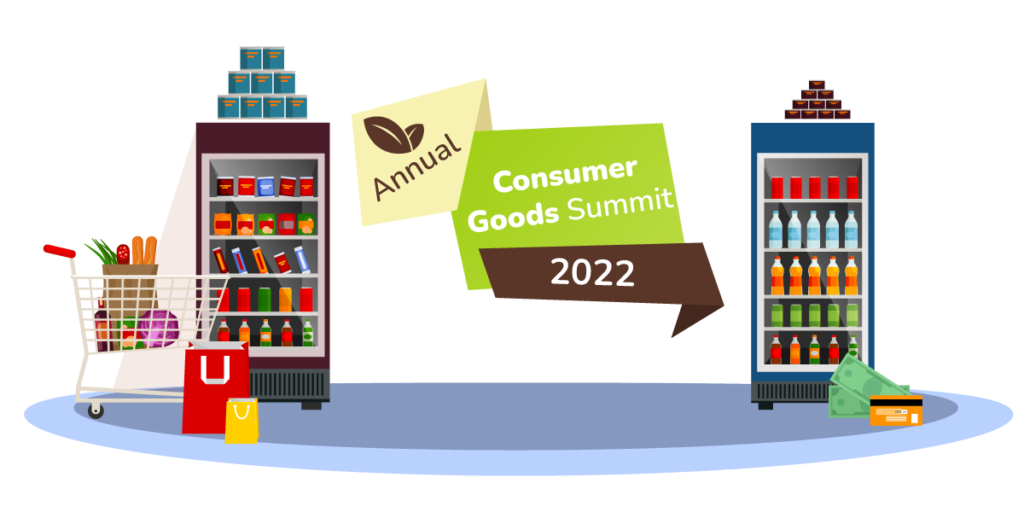At present, 94% of CPG food and beverage firms are experiencing less than 3% growth. Growth has been moving downward across industrial segments over the last five years, with the unprecedented impact of COVID-19 causing a bottoming out in 2020. CPG firms have been trying to fulfil rising consumer and customer expectations. Then the pandemic came, revealing that most major, multinational CPGs do not have flexible and responsive supply chains capable of coping with such disruption and complexity.
It is no longer sufficient for CPG firms to have an efficient engine. Supply chains must become laser-focused on providing outcomes that allow the organisation to fulfil the demands of consumers and customers. The value of these results will differ depending on the customer market. Because differentiation across all outcomes is not conceivable nor realistic, CPGs must select which are most essential to each customer category. The organisation must then align around developing the necessary competencies to deliver these results.
To be consumer-centric, businesses must reinvent and digitally empower their supply chains
Stake Value
The supply chain may assist a CPG company in pivoting to growth rather than simply being a cost centre. CPG firms that do not invest in critical competencies that allow resilience are holding back growth. According to an estimate, a $10 billion firm that implements an intelligent supply chain might increase revenues by up to 3% by improving product availability, providing better customer service, and reducing lost sales. It might boost profitability by up to 4% by cutting costs and enhancing working capital by up to 2%. Furthermore, by reducing energy use and carbon emissions, such a corporation might boost trust and sustainability.
Meeting customer value propositions
Accenture’s 2020 Supply Chain Survey of 178 consumer goods supply chain and operations leaders reveals a select group of firms that have outperformed their rivals. The survey gives information on the top value propositions that CPG companies are now focused on. According to the report, CPG businesses have prioritised the following customer value propositions over the next three years: consumer experience that is connected, price competition, trust and sustainability.
Connected customer experience: The focus on providing a connected customer experience has been highlighted in the midst of the epidemic. E-commerce was already expanding, and growth over the last ten years has more than quadrupled since COVID-19. This is hardly surprising given that individuals are spending more time at home and purchasing things online via e-commerce websites, social media channels, and subscription models. Indeed, interest in subscription models increased throughout the epidemic, with 80% of new users intending to continue using them.
CPG supply chains must be customised to create a connected customer experience, giving the optimal product proposition for each channel and consumer group and adjusting the portfolio as tastes change. They must also be responsive, addressing shifting consumer and customer demand across goods and purchasing channels.
Price competitiveness: Providing price-competitive products and services has become critical amid the epidemic and recession as customers have become more price vigilant. More than half (54%) of people are shopping more frugal by purchasing inexpensive brands. Delivering on the outcome of price competitiveness necessitates an optimised, cost-effective supply chain in order to deliver price competitiveness and contribute to the company’s profitability.
Sustainability and trust: Companies are concentrating on sustainable products and services, as well as sustainable (green) supply chains and production. Using ethical and sustainable methods fosters trust and benefits society and the environment. Seventy-eight percent of customers are making more sustainable purchases, and 93% want to continue doing so after the epidemic. To build confidence and demonstrate social responsibility, sustainable supply chains give end-to-end transparency and optimise for sustainability.
Agile and responsive supply chains are more robust to change and better suited to execute on a wide range of client value offerings. However, CPGs must make decisions regarding what is most essential. They must prioritise desired outcomes by segment and then develop the necessary skills to deliver them. Only a few firms have done this effectively.
What skills do leaders prioritise?
An analysis revealed a select number of CPG supply chain leaders who are focused on the consumer. They report greater maturity than their counterparts in the following areas:
- Segmentation of customers and products.
This is the single most distinguishing feature of customer-centric supply chain leaders. These firms find segments with similar criteria and structure their skills to produce the appropriate outcomes for these segments. - Design-to-margin capabilities, as well as collaborative and agile innovation.
These skills enable the delivery of the appropriate product portfolio at the lowest possible cost. Leaders report doing more of this not only within their organisation but also throughout the ecosystem. - Planning and execution occur together.
Based on synchronised planning and execution, these capabilities offer responsiveness and resilience, allowing the organisation to plan and re-plan the whole supply chain based on the most recent data insights. Leaders have purposefully invested in areas that will assist them in developing more tailored goods and services, whereas their counterparts frequently struggle with a range of issues and distributing investments across capabilities.
The new customer-focused supply chain
Constructing a consumer-centric supply chain necessitates rethinking supply chain structure, innovative technologies, and people. Research found that traditional supply chain operating models and organisational structures in CPGs are barriers, thus it’s time to make a change.
- Configuration CPGs must build a network of supply chains and assets to fulfil the demands of each segment. Where feasible, supply chain assets should be utilised at scale across various segments to control the cost base and change dynamically to allow for responsiveness and resilience. To be more flexible, some organisations are embracing asset-light architectures in which they outsource a large number of assets and leverage an ecosystem.
Asset-based supply chains lack the flexibility to respond swiftly to changes, and their static “one size fits all” architecture restricts their capacity to accomplish segmented results. According to our research, 35% of CPGs believe their supply chain and production capabilities are inflexible enough to give distinct goods and experiences. - Innovative digital technology Digital technology is used for customer and product segmentation, collaborative and rapid innovation, and other mature capabilities. One of the top three difficulties mentioned by businesses is a lack of an appropriate digital architecture and digital capabilities to link the organisation and ecosystem. This connection is required for cross-functional decision making to result in a consumer-centric supply chain. Many businesses are already upgrading their ERP systems with the new architecture. They construct this as a digital core that supplies the essential data and processes. It is, however, insufficient to provide the digital capabilities required to constitute an “intelligent supply chain.” Legacy systems with degraded capability are difficult to adapt and link to new applications required to deliver on increasing customer value propositions. CPGs, on the other hand, require a supply chain capacity that enables features like concurrent planning, segmentation, and agile innovation.
The journey towards a consumer-centric supply chain
CPGs should invest in capabilities that will deliver on their priority value propositions and results. These will differ for each company, and nearly no company can accomplish everything. The need for the right technology to enable innovative capabilities within the supply chain, flexible processes to enable the business to provide differentiated offerings and experiences, and the organisational structure to allow cross-functional decision-making, collaboration, and an agile response to new challenges or opportunities will be the same across companies.
-
Create a vision.
CPGs must first understand the experiences that customers, shoppers, and consumers today expect, and then adapt their capabilities to respond quickly. The vision should include each sector so that the company does not strive to offer everything to everyone.
A clear vision will motivate the company, its customers, and its partners to participate in the transformation journey and to devote the necessary resources and effort to the change. Consumers and customers are important stakeholders in the process of becoming a supply chain focused on high-quality customer service and experiences. -
Take the initiative:
CPG companies should consider developing a portfolio of projects that can produce short-term benefits while also allowing for the necessary innovation to enable continuous improvement programmes, create adaptive capabilities, and support the company’s long-term strategy.
-
Install the appropriate operating model and technologies.
The creation of a consumer-centric supply chain might be hampered by organisational structures, procedures, and technology. Leading CPG companies recognise the benefits of humans and robots. Through digitised procedures, technology may increase the quality of decision-making at speed while also freeing humans to focus on making difficult, strategic, and cross-functional choices. This happens only when the underlying structure is silo-free and designed for cross-functional cooperation.
In conclusion
CPG firms can satisfy the demands of today’s consumers, who have changing tastes and habits, by developing this strong basis and organising around results. This is crucial for growth. There has never been a better opportunity to prioritise consumers and customers while also strengthening the supply chain for the future.




